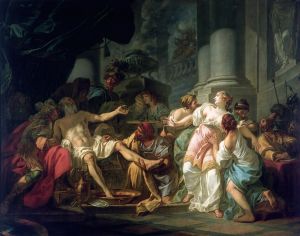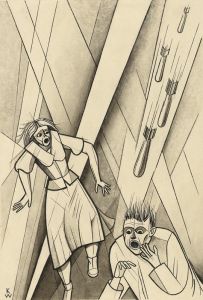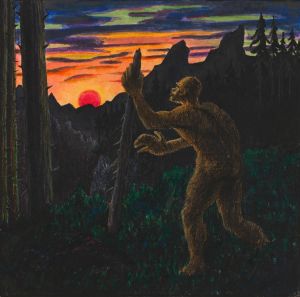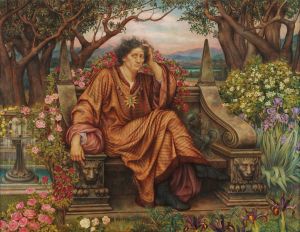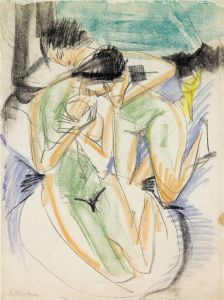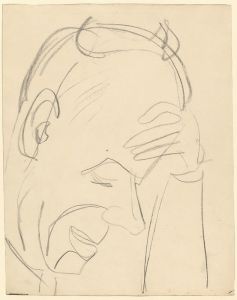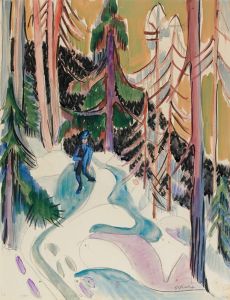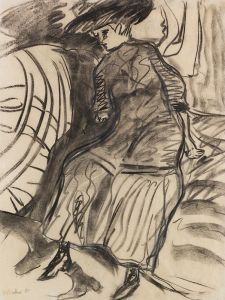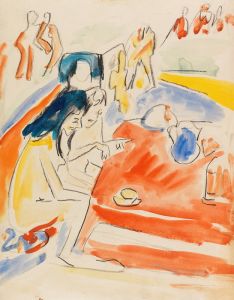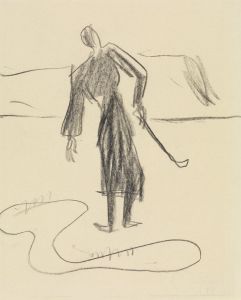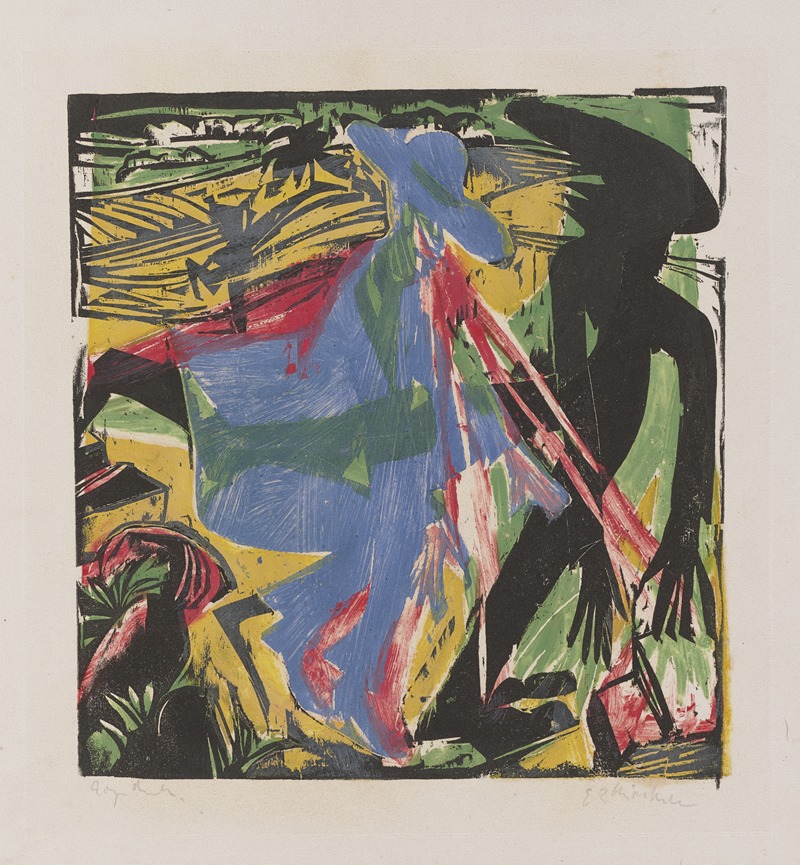
Schlemihl’s Encounter with the Shadow
A hand-painted replica of Ernst Ludwig Kirchner’s masterpiece Schlemihl’s Encounter with the Shadow, meticulously crafted by professional artists to capture the true essence of the original. Each piece is created with museum-quality canvas and rare mineral pigments, carefully painted by experienced artists with delicate brushstrokes and rich, layered colors to perfectly recreate the texture of the original artwork. Unlike machine-printed reproductions, this hand-painted version brings the painting to life, infused with the artist’s emotions and skill in every stroke. Whether for personal collection or home decoration, it instantly elevates the artistic atmosphere of any space.
Ernst Ludwig Kirchner's painting Schlemihl’s Encounter with the Shadow is a work created by the German Expressionist artist, who was a founding member of the art movement Die Brücke (The Bridge). This movement, established in 1905, sought to break away from traditional academic art and embraced a more emotional, raw, and modern approach to artistic expression. Kirchner's works are characterized by bold colors, dynamic compositions, and a focus on the psychological and emotional aspects of human experience.
The painting Schlemihl’s Encounter with the Shadow is inspired by the novella Peter Schlemihl's Remarkable Story (1814) by Adelbert von Chamisso. The story revolves around Peter Schlemihl, a man who sells his shadow to the devil in exchange for unlimited wealth, only to realize the profound social and existential consequences of his decision. The tale explores themes of identity, alienation, and the metaphysical relationship between a person and their shadow.
Kirchner's interpretation of this story reflects his interest in the psychological and symbolic dimensions of art. The painting captures the moment of Schlemihl's encounter with his shadow, rendered in Kirchner's distinctive Expressionist style. The figures and forms in the painting are often distorted, emphasizing emotional intensity over realistic representation. The use of vivid, contrasting colors and dynamic brushstrokes creates a sense of tension and unease, aligning with the themes of the original story.
This work is part of Kirchner's broader exploration of human psychology and modern life, themes that are central to his oeuvre. His art often delves into the complexities of urban existence, the alienation of individuals in modern society, and the interplay between the external world and inner emotions. While Schlemihl’s Encounter with the Shadow is not among Kirchner's most widely known works, it exemplifies his ability to translate literary and philosophical ideas into visual form.
The exact date of the painting's creation and its current location are not specified in widely available sources. However, it is consistent with Kirchner's artistic output during the early 20th century, a period when he was actively producing works that challenged traditional artistic conventions and explored the human condition through the lens of Expressionism.
Ernst Ludwig Kirchner's career was deeply affected by the political and social upheavals of his time. His art was labeled "degenerate" by the Nazi regime, and many of his works were confiscated or destroyed. Despite these challenges, Kirchner remains a pivotal figure in modern art, and his works continue to be studied and celebrated for their innovative approach and emotional depth.





